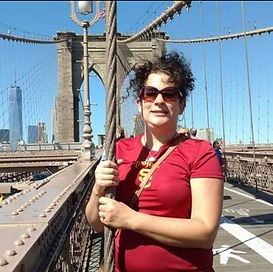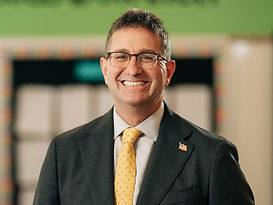GUEST COLUMN.
OKLAHOMA’S STRATEGY FOR ELIMINATING ITS WAITING LIST FOR PEOPLE WITH DEVELOPMENT DISABILITIES
By Justin Brown, Former secretary of the Department of Human Services Oklahoma and Samantha Galloway, Owner, Strategic Abilities Consulting

Introduction
For generations, Americans with developmental disabilities have faced challenges when seeking essential services. The systems from which they seek assistance have long been plagued by very long waits for services driven by insufficient financial and community resources. In Oklahoma, the situation was dire as the number of individuals awaiting services was growing annually
In June of 2019, there were 5,569 Oklahomans with developmental disabilities waiting for services, many of whom had been waiting for more than a decade. Not only were the lives of these Oklahomans severely limited by the lack of available support, but many of their family members were unable to work to support their families, as they were forced to stay home to care for their loved one.
In late 2019, a fresh perspective, bold commitment, strategic planning, and a culture of deep collaboration ushered in an era of hope for substantive change. This guest column sheds light on the transformation that occurred within the Oklahoma Department of Human Services (OHS), highlighting the strategies that were employed to successfully eliminate the waiting list and modernize the developmental disabilities service delivery system.
A Historical Challenge and a New Direction
For decades, the State of Oklahoma struggled with a persistent waiting list for developmental disability services. The demand consistently outweighed the supply, creating a frustrating cycle for both individuals seeking support and the agency responsible for providing it. Historically, internal competition for scarce resources from other programs within OHS including child welfare, childcare, aging and adult protective services, and family stabilization programs resulted in a shortage of funds to serve people with developmental disabilities. Further, the critical workforce, systems infrastructure and community-based service providers necessary to serve them fell behind as well. To address this significant systemic issue, a bold new approach was desperately needed.
In 2019, as new leaders of Oklahoma’s Department of Human Service, we publicly planted a flag in the ground stating that we were personally and professionally committed to ending the waiting list for developmental disability services in Oklahoma. Acknowledging the complexity of the challenge, we recognized that a multi-faceted strategy was necessary.
Necessary to a bold strategy in government is an agency team aligned with the mission. In 2019, as new leaders coming into the agency, we built a grassroots strategic planning process referred to as ‘True North.’ This True North process along with the development of a culture roadmap was built on four fundamental philosophies. They would be: 1) human centered, 2) outcome driven, 3) relationship focused and 4) trauma Informed and hope centered. This critical understanding allowed for alignment between leadership and the teams in the agency that would be critical to execute long-term transformation.
The Successful Approach
There were five basic elements that were utilized by the state in this historic success story. They were as follows:
1. Internal Fiscal Capacity Enhancement
Recognizing that fiscal transparency was required to gain insight into the issues and trust from appropriators, we pursued a strategy to take advantage of proven approaches to internal business and budgeting practices as foundational to this potential opportunity. In so doing, we demonstrated commitment to addressing the issue head-on with internal and external stakeholders. This commitment not only showcased a proactive approach but also positioned the agency to be more effective in securing additional financial and community support.
2. Building Strategic Relationships
Past attempts to address the waiting list had sometimes resulted in a divisive "villain/victim" narrative. We recognized the importance of shifting this narrative to one of collaboration. Building strategic relationships with those who controlled funding, such as appropriators, was key to gaining their trust and confidence in OHS's ability to execute solutions. Critical to success was a deep and collaborative relationship with Oklahoma’s Governor Kevin Stitt, who remained steadfast in his support throughout the process. The alignment between the executive and legislative branches is sometimes difficult to achieve. In this instance, all parties focused on the good that comes from a state standing shoulder to shoulder to serve the most vulnerable members of our society.
3. Historic Funding
Having clearly articulated the bold plan to appropriators with whom we had built a strong transparent relationship allowed us to approach the 2022 legislative session with a transformative request. Historically, the single greatest increase in appropriations to address the waitlist was two million dollars. The 2022 legislative budget ended with a total investment, including federal matching funds, of one hundred seventy-four million dollars, an amount sufficient to eliminate the waitlist. In addition to funding to directly remove Oklahomans from the waitlist, a material rate increase was secured to support providers in the need to build a community-based system that can adequately serve thousands of clients whose wait has ended and are now receiving services.
4. Collaboration with Service Partners
Understanding that funding wasn’t the only necessary resource and the limitations of trying to tackle the issue alone, OHS collaborated with service partners who possessed the expertise and agility that government agencies often lack. These partners brought innovative ideas and practical solutions that aligned with OHS's mission, creating a synergistic approach to addressing the waiting list.
5. Effective Communication
Throughout the transformation, communication was paramount. The team adopted a transparent approach, regularly updating stakeholders and the public on progress made and challenges faced. This not only managed expectations but also fostered a sense of accountability and responsibility within the agency. As families across Oklahoma began to learn about this bold plan, the team developed a series of ‘Regional Family Meetings’ that continue to this day, educating families about waiver services and providing never seen resources to help them understand the pathway ahead for their loved ones coming off the decade long wait for services.
Conclusion
The turnaround at OHS serves as a beacon of hope, illustrating the potential for change even within complex and entrenched systems. By addressing internal practices, building bridges with funding authorities, collaborating with nimble service partners, and maintaining open lines of communication, the waiting list for developmental disability services is well on the way to being effectively eliminated. This success story demonstrates that with visionary leadership, a commitment to change, and a collaborative spirit, even the most challenging of issues can be tackled and transformed for the betterment of society's most vulnerable populations.



































































































